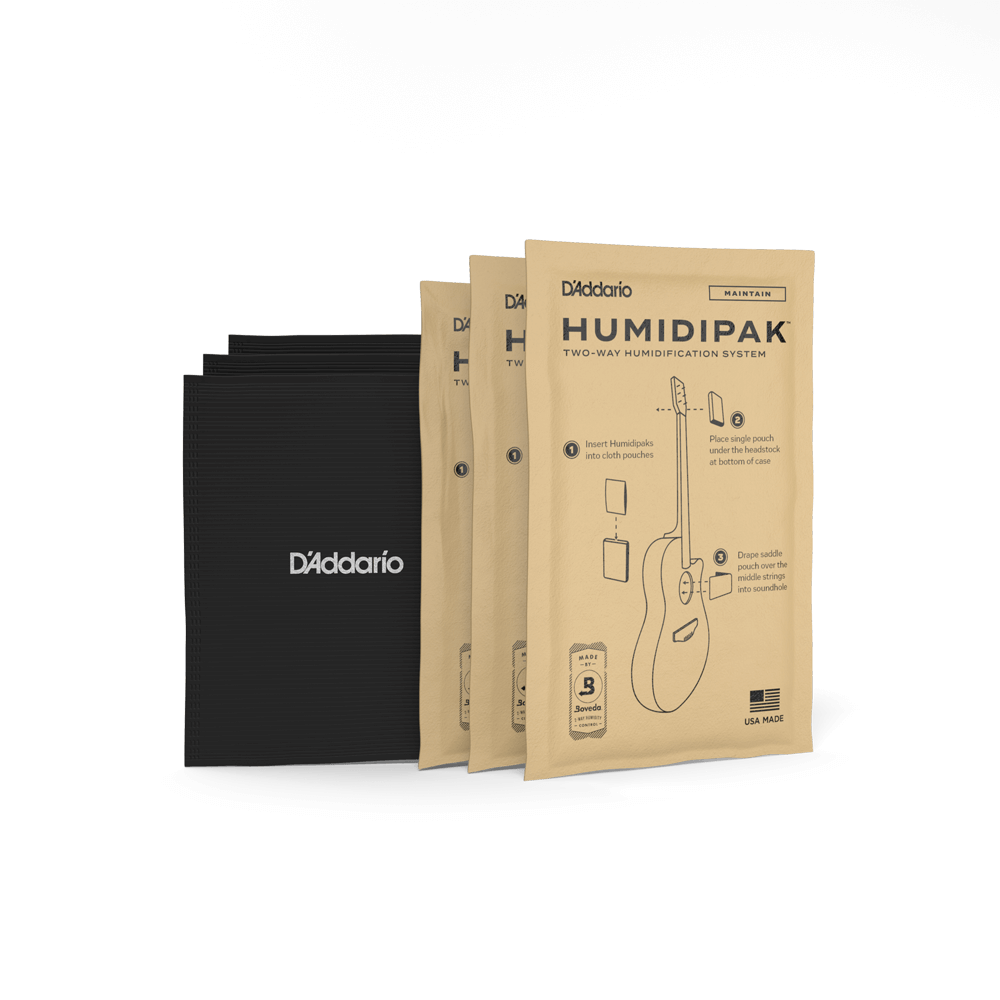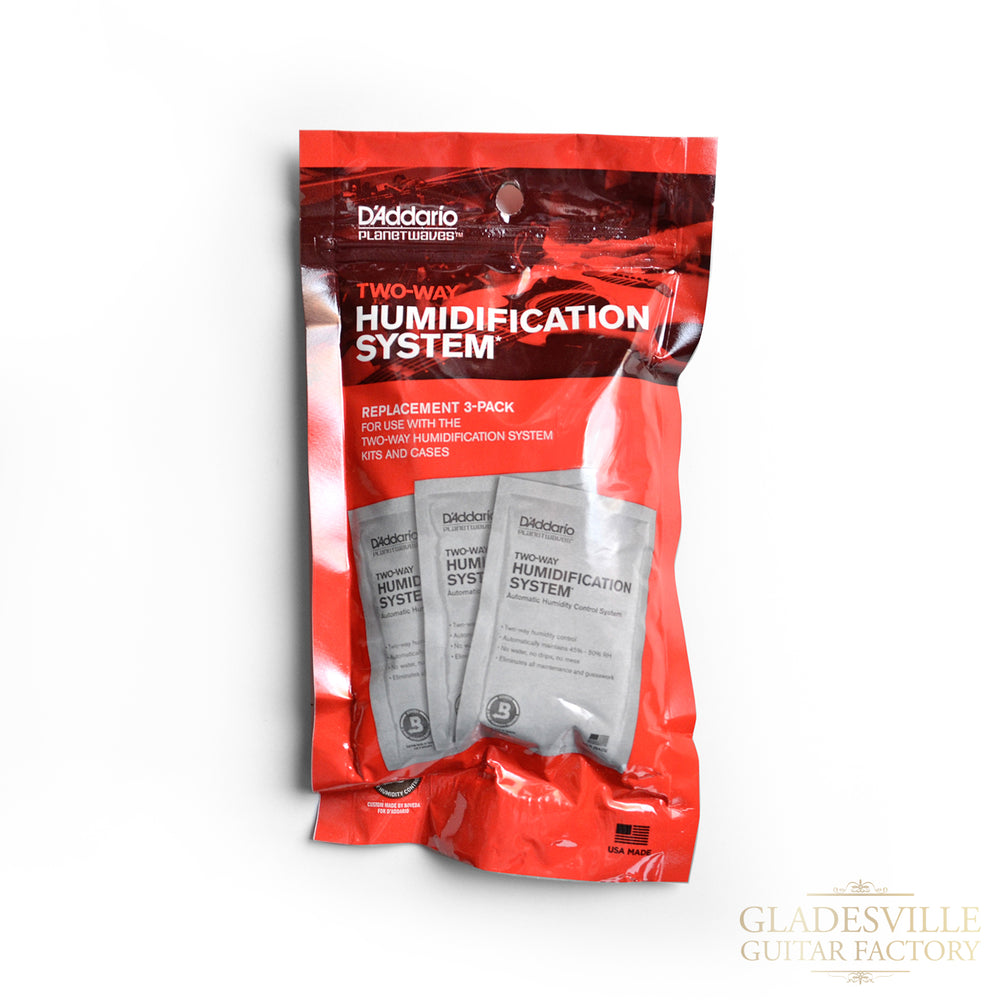Check out the following information from Taylor Guitars
SYMPTOMS OF A WET GUITAR
SYMPTOMS OF A DRY GUITAR
USING A GUITAR HUMIDIFIER
OWNERS SHOULD BE AWARE THAT PROBLEMS CAN OCCUR WITH ANY STYLE OF GUITAR BUT ARE MORE PREVALENT WITH HIGHER PRICED & SOLID TIMBER GUITARS. AS THIS IS RELATED TO THE GUITARS STORAGE CONDITIONS IT IS NOT GENERALLY COVERED UNDER NORMAL PURCHASE OR REPAIR WARRANTIES.
Humidity Care Products
Humidity & Your Guitar
Acoustic guitars and ukuleles are built from wood, and wood naturally reacts to changes in its environment. Temperature and humidity play a big role in how your instrument feels, sounds, and lasts over time. Without proper care, climate changes can cause problems that are costly to repair.
Why Humidity Matters
Wood expands as it absorbs moisture and contracts as it dries out. This means your instrument is always responding to the air around it. If humidity levels are not controlled, you may notice issues with tone, tuning, and overall playability. Over time, serious structural damage can occur.
- Low humidity (below 40% RH): Wood dries out and shrinks, which can lead to cracks, sunken tops, sharp fret ends, or a change in the neck angle.
- High humidity (above 60% RH): Wood takes on too much moisture, causing swelling, warping, high action, or a distorted soundboard and back.
These changes don’t just affect how your instrument looks—they directly impact how it plays.
The Ideal Range
The safest environment for acoustic guitars and ukuleles is between 45–55% relative humidity (RH). Keeping your instrument in this range will help prevent damage and preserve tone and playability.
How to Control Humidity
The best protection is consistent humidity control:
- Use a case: Store your instrument in its case whenever possible.
- Add a two-way humidifier: A case humidifier helps regulate moisture automatically, releasing or absorbing water as needed.
- Monitor with a digital hygrometer: Place one in your case or room to keep track of humidity levels at all times.
- Control your room: If you keep instruments on stands or wall hangers, use a humidifier when the air is too dry and a dehumidifier when it’s too damp.
Humidity varies depending on the season, climate, and even which room your instrument is stored in, so regular checks are important.
Signs of Trouble
Knowing the warning signs can help you act quickly:
- Dry instruments may show: low action, fretboard humps, sunken tops, sharp fret ends, or cracks.
- Overly humid instruments may show: high action, swollen tops or backs, warped bodies, or poor neck angles.
Protecting Your Investment
Problems from poor humidity control are most common in solid-wood and high-value instruments, and they are not usually covered under warranty. Prevention is far better (and cheaper) than repair.
By keeping your guitar or ukulele properly humidified and monitored, you’ll protect its structure, maintain its tone, and enjoy reliable playability for years to come.






